Home> Company News> How To Set Up A Hydraulic Pumps - Everything You Need To Know
- AddressTianqiao, Beiyuan District, Jinan,Shandong
- Worktime9:00-18:00(Beijing time)
- Phone(Working Time)0531-8299 9953
Hydraulic pumps are an essential component of many hydraulic systems, including those used in construction, manufacturing, and transportation. They work by converting mechanical power into hydraulic energy, which is then used to power hydraulic cylinders, motors, and other devices. Proper setup of a hydraulic pump system is critical to ensure optimal efficiency and performance, and can help to minimize the risk of equipment failure or breakdown.
In this guide, we will cover everything you need to know to set up a hydraulic pump system. From understanding the different types of hydraulic pumps and selecting the right pump for your needs, to installing the pump, connecting it to the hydraulic system, testing the system, and maintaining it over time, we will provide you with a comprehensive overview of the process.
Whether you are setting up a hydraulic pump system for the first time or are looking to optimize the performance of an existing system, this guide will provide you with the information you need to achieve optimal results. So let's dive in and explore the world of hydraulic pump systems.
Understanding Hydraulic Pumps
Hydraulic pumps are used to convert mechanical power into hydraulic energy, which is then used to power hydraulic systems in a variety of applications, including heavy machinery, construction equipment, and industrial processes. Hydraulic pumps operate by utilizing the properties of hydraulic fluid to transmit power and energy from the pump to the hydraulic system.
There are two main types of hydraulic pumps: positive displacement pumps and dynamic pumps. Positive displacement pumps work by trapping fluid and forcing it into a hydraulic system. These pumps are ideal for systems that require constant flow, as they can maintain a constant flow rate regardless of changes in system pressure. Examples of positive displacement pumps include gear pumps, vane pumps, and piston pumps.
Dynamic pumps, on the other hand, use the kinetic energy of a fluid to move it through the hydraulic system. These pumps are ideal for systems that require varying flow rates, as they can adjust their flow rate to changes in system pressure. Examples of dynamic pumps include centrifugal pumps and axial pumps.
Understanding the different types of hydraulic pumps and their respective applications is key to setting up a hydraulic pump system that is optimized for performance, efficiency, and longevity. By selecting the appropriate type of hydraulic pump and ensuring that it is properly installed and maintained, hydraulic system users can enjoy reliable and efficient hydraulic power.
Selecting the Right Pump
When it comes to selecting the right hydraulic pump, there are several factors that need to be considered. One of the most important factors is the flow rate, which is the volume of fluid that the pump can move within a given time frame. The flow rate should match the hydraulic system's requirements to ensure optimal performance.
Another key factor to consider is the pressure rating of the pump. The pressure rating is the maximum amount of pressure that the pump can generate. It is important to choose a pump with a pressure rating that matches the needs of the hydraulic system.
Speed is another important factor to consider. The speed of the hydraulic pump refers to the number of revolutions per minute (RPM) that the pump makes. It is important to choose a pump that has a speed range that matches the hydraulic system's needs.
The viscosity of the hydraulic fluid is another factor to consider when selecting a pump. Viscosity refers to the thickness or thinness of the fluid. Different pumps are designed to work with fluids of different viscosities, so it is important to choose a pump that is compatible with the hydraulic fluid being used.
Finally, the type of hydraulic system and its intended application will also impact the pump selection process. For example, a system that requires precise control over fluid flow may require a different type of pump than a system that requires high flow rates.
Overall, selecting the right hydraulic pump is critical to achieving optimal system performance. It is important to carefully consider the factors outlined above to ensure that the pump is the right fit for the hydraulic system's requirements.

Installing the Pump
Proper installation of a hydraulic pump is crucial to ensuring optimal performance and safe operation. Here are the key steps to follow when installing a hydraulic pump:
-
Choose a suitable location: The pump should be installed in a clean, dry, and well-ventilated area. It should be located close to the hydraulic reservoir and within reach of the power source. The location should also provide easy access for maintenance and repair.
-
Securely mount the pump: The pump should be mounted securely on a flat surface using bolts and brackets. The surface should be strong enough to support the weight of the pump and any additional components.
-
Ensure proper alignment: The pump must be properly aligned with the drive shaft to prevent any damage to the pump or motor. The alignment should be checked using a dial indicator.
-
Connect the pump to the power source: The pump should be connected to the power source using a flexible coupling. The coupling should be properly aligned to prevent any misalignment between the pump and the power source.
-
Install the hydraulic fluid reservoir: The hydraulic fluid reservoir should be installed close to the pump and should be connected to the pump using hoses and fittings. The reservoir should be properly vented to prevent airlocks and ensure proper hydraulic fluid flow.
-
Fill the hydraulic fluid reservoir: The hydraulic fluid reservoir should be filled with the appropriate type and amount of hydraulic fluid. It is important to use the recommended fluid type to prevent damage to the pump and other hydraulic system components.
-
Check for leaks: After installing the pump and connecting it to the hydraulic system, it is important to check for any leaks. Leaks can occur at the connections, hoses, or other components. Any leaks should be addressed and resolved promptly.
Following these steps when installing a hydraulic pump can help ensure that the pump operates efficiently and safely, and can help prevent any costly repairs or downtime due to system failures.
Connecting the Pump to the Hydraulic System
Connecting the pump to the hydraulic system is a critical step in the setup process. Proper connection of the pump ensures that the hydraulic system operates effectively and with minimal risk of leaks or other issues. The following are the necessary steps to connect the pump to the hydraulic system:
-
Install Valves: Install the necessary valves in the hydraulic system. The type and number of valves required will depend on the application and the specific hydraulic system. Generally, a pressure relief valve, directional control valve, and flow control valve are required.
-
Connect Hoses: Connect the hydraulic hoses to the pump and the valves. It is important to ensure that the hoses are properly sized for the pump and the hydraulic system. The hoses should also be routed in a way that prevents kinks or other damage.
-
Install Fittings: Install the necessary fittings to connect the hoses to the pump and valves. It is important to ensure that the fittings are tight and secure to prevent leaks.
-
Test the Connections: Test the connections to ensure that there are no leaks. Apply pressure to the system and check all connections for leaks. If any leaks are found, tighten the connections or replace any damaged components.
-
Connect the Reservoir: Connect the hydraulic reservoir to the pump. It is important to ensure that the reservoir is clean and free from contaminants before connecting it to the pump.
-
Install Accessories: Install any necessary accessories, such as filters or gauges, as required by the hydraulic system.
-
Proper Labeling: Proper labeling of the hydraulic system is essential. Ensure that all components, valves, hoses, and fittings are labeled correctly for easy identification and maintenance.
Proper connection of the pump to the hydraulic system is essential to achieve optimal performance and efficiency from the hydraulic system. It is important to ensure that all connections are tight and secure and that the hoses are properly routed to prevent damage. Regular inspection and maintenance of the hydraulic system will help to ensure that it continues to operate effectively and efficiently.
Testing the Hydraulic Pump System
Once the hydraulic pump system has been installed and connected, it is important to test the system to ensure that it is operating properly. Testing a hydraulic pump system involves checking for leaks, verifying the pressure and flow rate of the hydraulic fluid, and checking that all valves and other components are working as expected.
The first step in testing a hydraulic pump system is to check for leaks. This can be done by inspecting all connections and hoses for signs of fluid leakage. Any leaks should be identified and repaired promptly to prevent further damage to the system.
Next, the pressure and flow rate of the hydraulic fluid should be verified. This can be done using a pressure gauge and flow meter. The pressure should be checked at different points in the hydraulic system to ensure that it is consistent throughout. The flow rate should also be checked to ensure that it is sufficient for the intended application.
Finally, all valves and other components in the hydraulic system should be checked to ensure that they are working properly. Valves should be opened and closed to verify that they are functioning correctly, and any damaged or worn components should be identified and replaced.
Any issues or problems that are identified during testing should be addressed and resolved before the hydraulic system is put into operation. This will help to prevent more serious issues down the line and ensure that the hydraulic pump system operates efficiently and effectively.
In addition to testing the hydraulic pump system during installation, regular testing and maintenance should be performed to ensure continued optimal performance. This includes checking for leaks, verifying the pressure and flow rate of the hydraulic fluid, and inspecting and replacing worn or damaged components as needed. By following a regular maintenance schedule and addressing any issues promptly, the hydraulic pump system can continue to operate efficiently and reliably for many years.
Maintaining the Hydraulic Pump System
Proper maintenance is key to ensuring the longevity and optimal performance of a hydraulic pump system. Regular maintenance can help to prevent costly repairs and downtime, as well as improve the efficiency of the system. Here are some important maintenance tasks to perform on a hydraulic pump system:
-
Check for leaks: Leaks can lead to fluid loss, which can impact the performance of the system. Regularly inspect the hydraulic system for leaks and repair any that are found promptly.
-
Change the hydraulic fluid: Hydraulic fluid can become contaminated over time, which can impact the performance of the system. It is important to regularly change the hydraulic fluid as recommended by the manufacturer.
-
Inspect and replace worn or damaged components: Components such as hoses, valves, and fittings can wear out over time or become damaged due to regular use. Inspect these components regularly and replace any that are worn or damaged to prevent further issues.
-
Check and adjust pressure settings: Proper pressure settings are essential to achieving optimal system performance. Regularly check the pressure settings and adjust them as needed.
-
Clean the system: Dirt, debris, and other contaminants can impact the performance of the system. Regularly clean the hydraulic system to prevent these contaminants from accumulating.
-
Lubricate moving parts: Proper lubrication can help to reduce friction and wear on moving parts, improving the efficiency and longevity of the system.
-
Follow manufacturer recommendations: It is important to follow the manufacturer's recommended maintenance schedule and procedures to ensure that the hydraulic pump system operates efficiently and safely.
By following these maintenance tasks, you can help to ensure the longevity and optimal performance of your hydraulic pump system. Regular maintenance can also help to prevent costly repairs and downtime, keeping your system operating smoothly for longer.

Setting up a hydraulic pump system may seem daunting, but with proper understanding and installation, you can achieve optimal efficiency and performance.
Understanding the different types of hydraulic pumps is key to setting up a hydraulic pump system. Positive displacement pumps trap fluid and force it into a hydraulic system, while dynamic pumps use the kinetic energy of a fluid to move it through the system. Selecting the right hydraulic pump is crucial to achieving optimal performance, and factors to consider include flow rate, pressure, speed, viscosity, and the type of hydraulic system and its intended application.
Once you have selected the appropriate hydraulic pump, proper installation is crucial for safety and efficiency. Mounting the pump securely with proper alignment and connection to the hydraulic system is important, and the hydraulic fluid should be clean and free from contaminants before installation. Connecting the pump to the hydraulic system involves installing the necessary valves, hoses, and fittings. Proper connection ensures the system operates effectively and with minimal risk of leaks or other issues.
After installation and connection, testing the hydraulic pump system is necessary to ensure proper operation. Testing includes checking for leaks, verifying the pressure and flow rate of the hydraulic fluid, and ensuring that all valves and components are working properly. Any issues or problems should be addressed and resolved before the hydraulic system is put into operation.
Finally, regular maintenance is essential to ensuring the continued efficiency and longevity of the hydraulic pump system. Checking for leaks, changing the hydraulic fluid as needed, and inspecting and replacing worn or damaged components are important tasks in a regular maintenance schedule.
By following these steps and properly understanding and installing a hydraulic pump system, you can achieve optimal performance and efficiency.


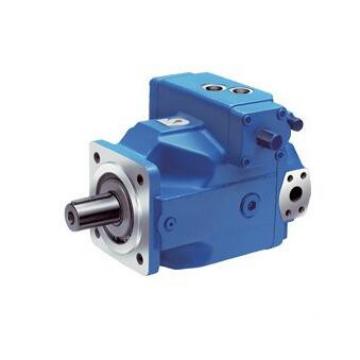 USA VICKERS Pump PVH131R13AF30B252000002001AB010A
USA VICKERS Pump PVH131R13AF30B252000002001AB010A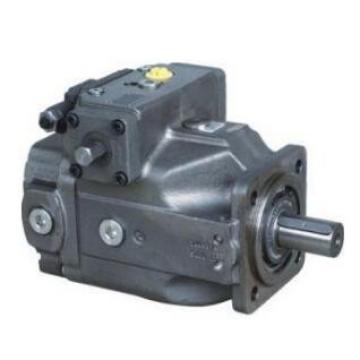 Parker Piston Pump 400481002108 PV140R1K1B4NWLZ+PGP517A0
Parker Piston Pump 400481002108 PV140R1K1B4NWLZ+PGP517A0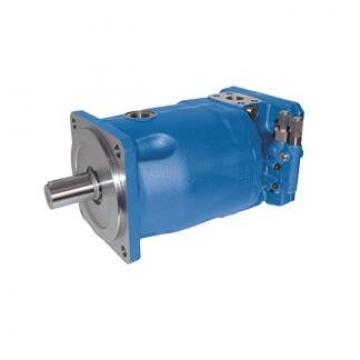 Parker Piston Pump 400481003286 PV180R1K1A4NYCD+PGP511A0
Parker Piston Pump 400481003286 PV180R1K1A4NYCD+PGP511A0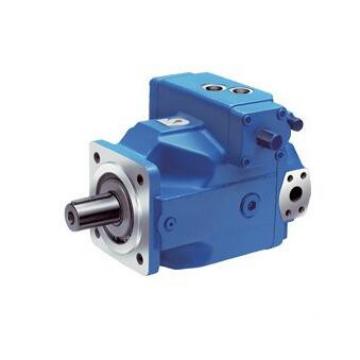 USA VICKERS Pump PVH057R02AA10B25200000100100010A
USA VICKERS Pump PVH057R02AA10B25200000100100010A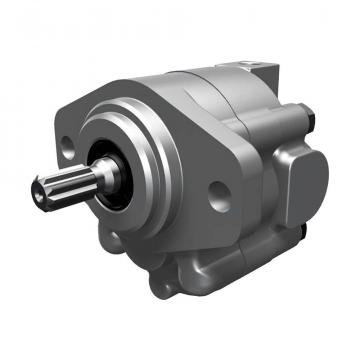 Parker Piston Pump 400481004166 PV270R9K1B4NYLZK0033+PVA
Parker Piston Pump 400481004166 PV270R9K1B4NYLZK0033+PVA